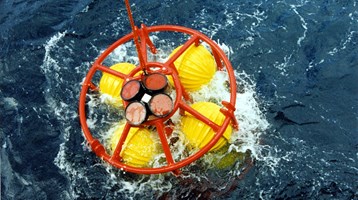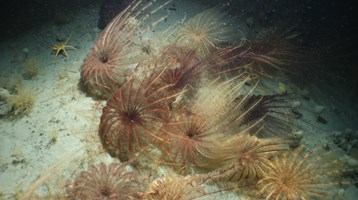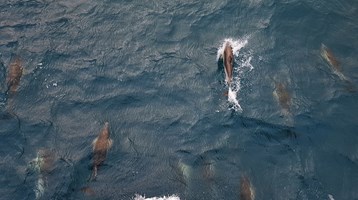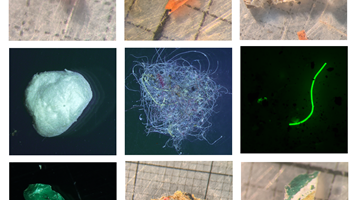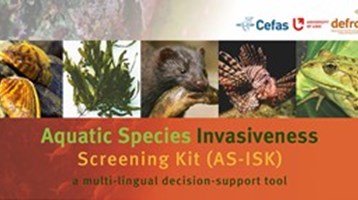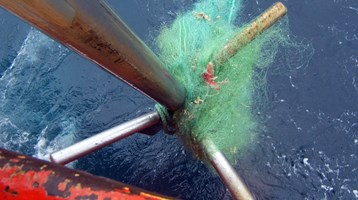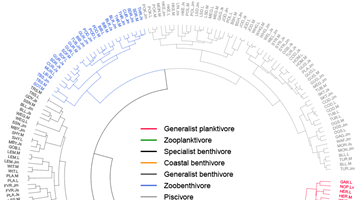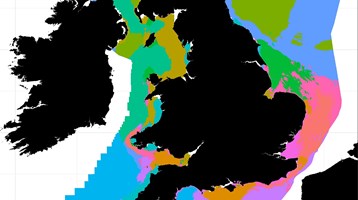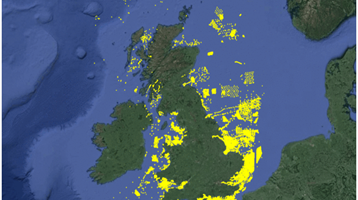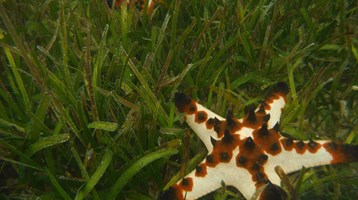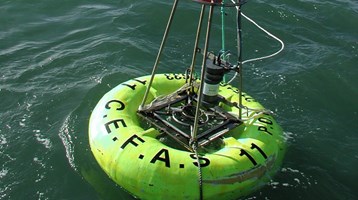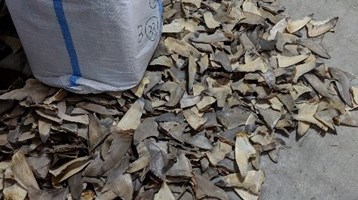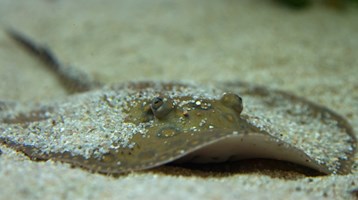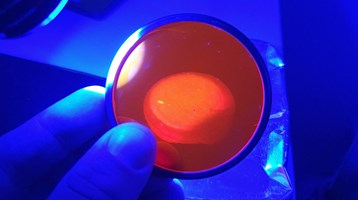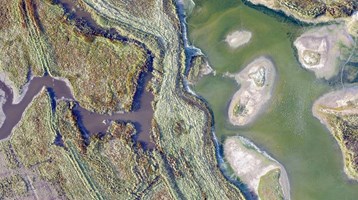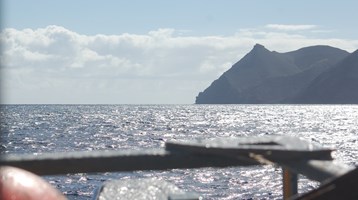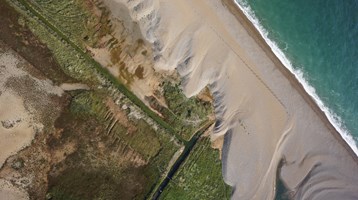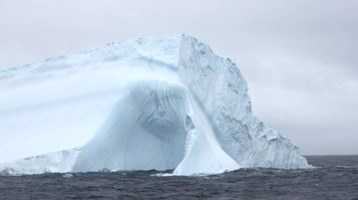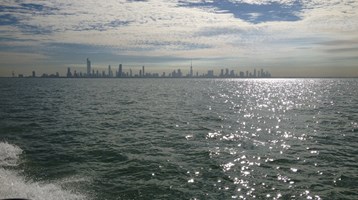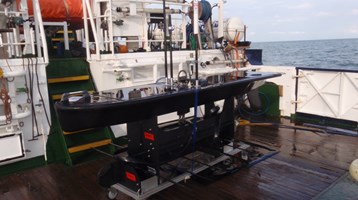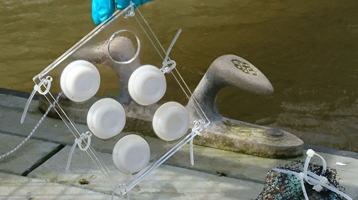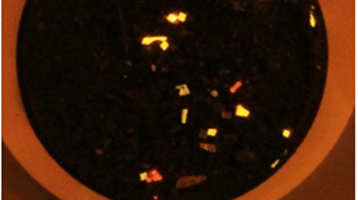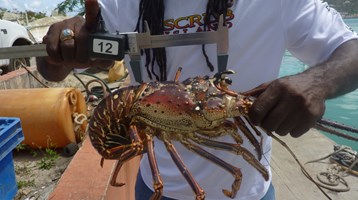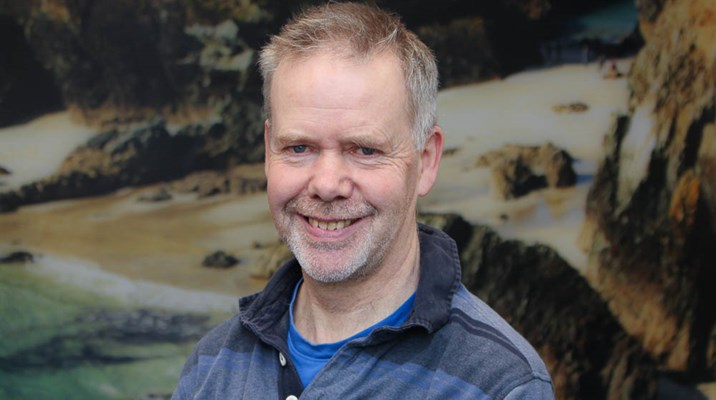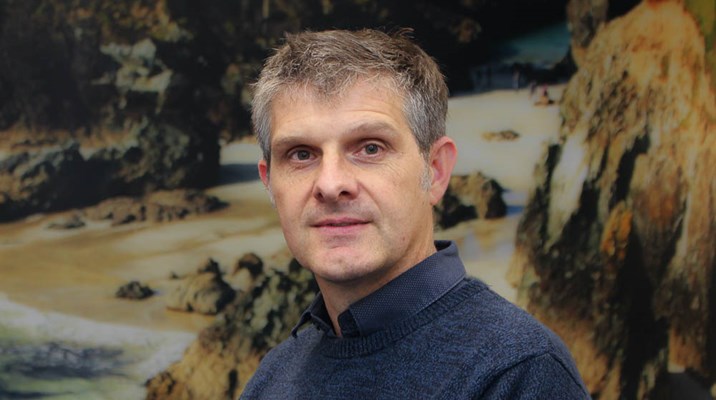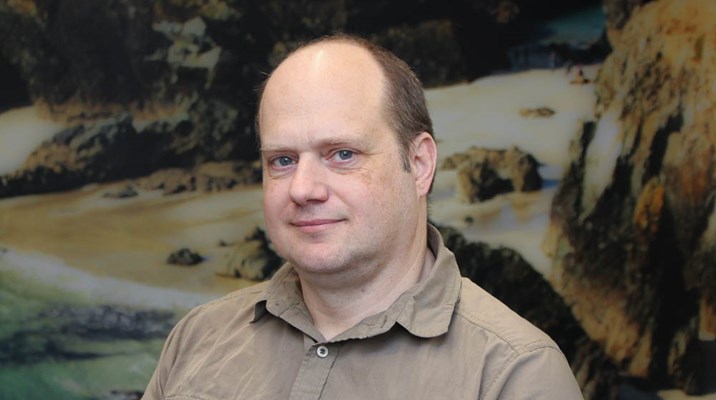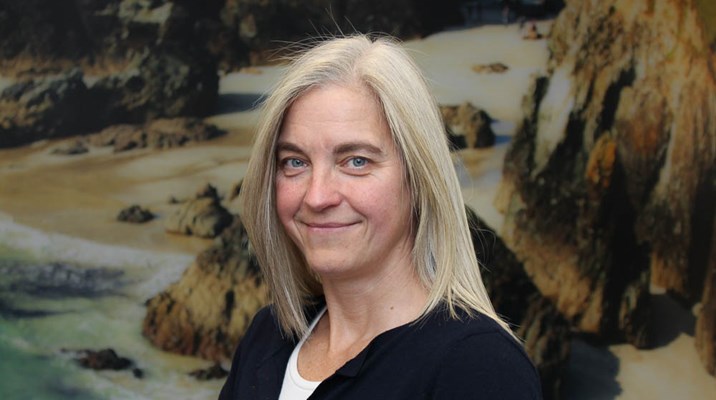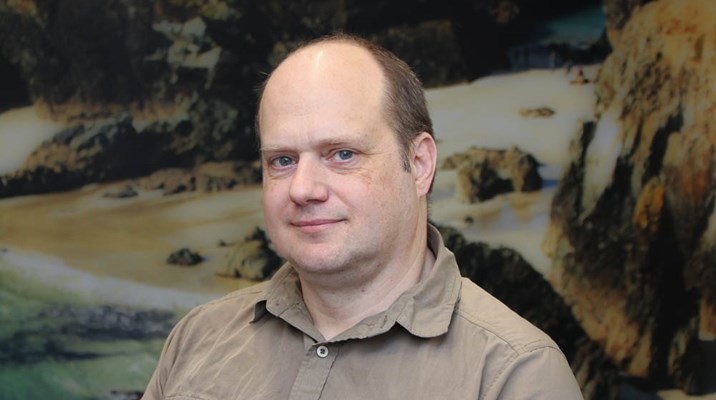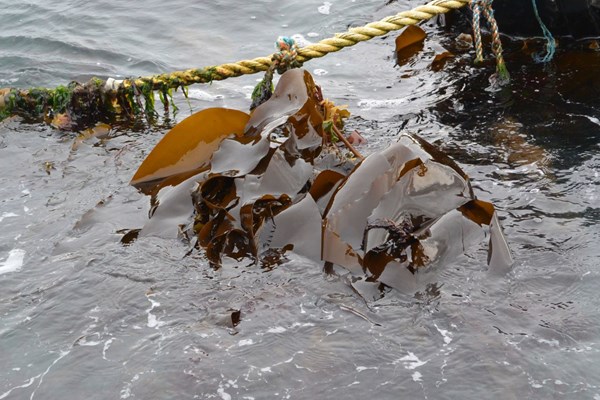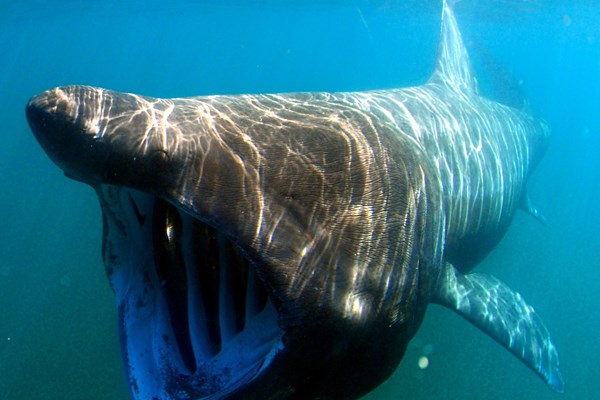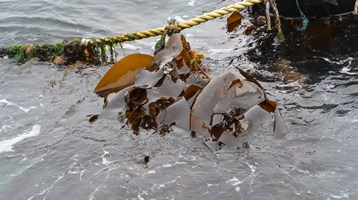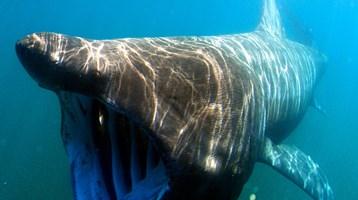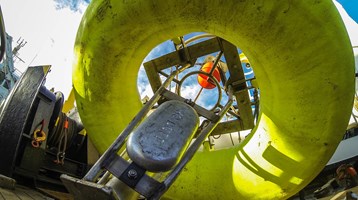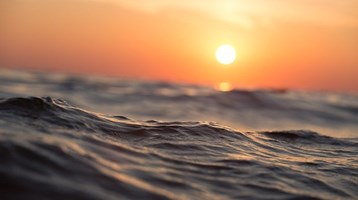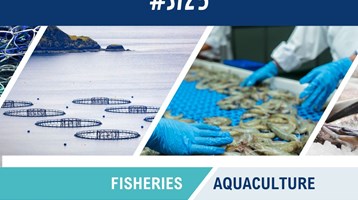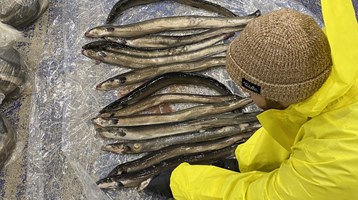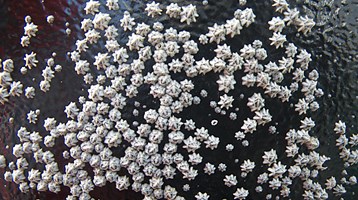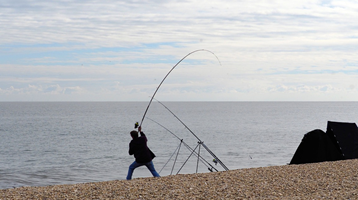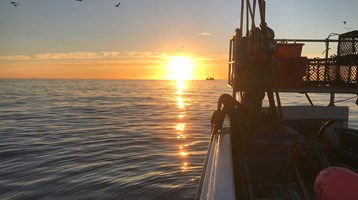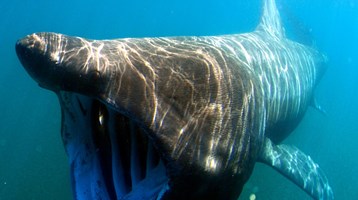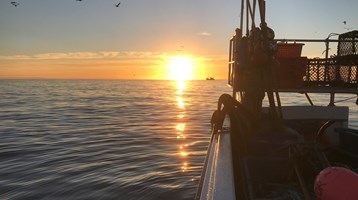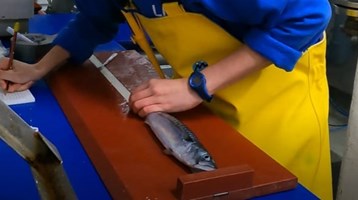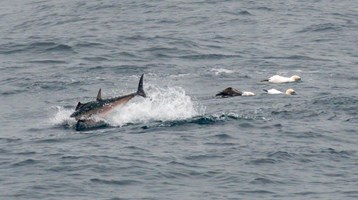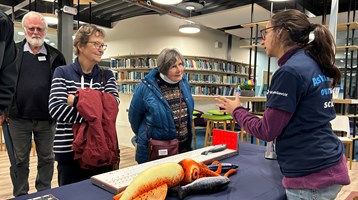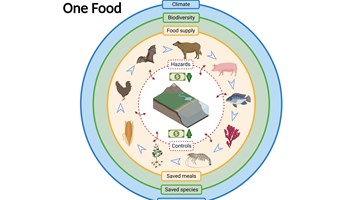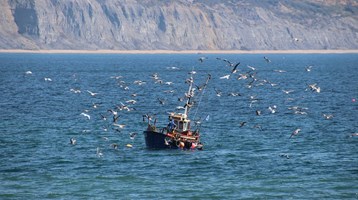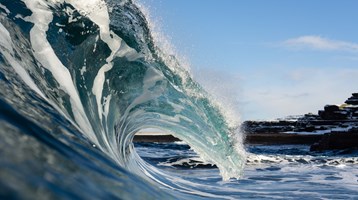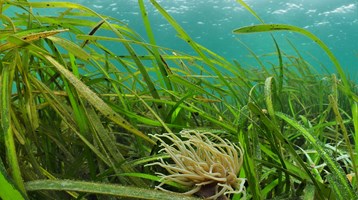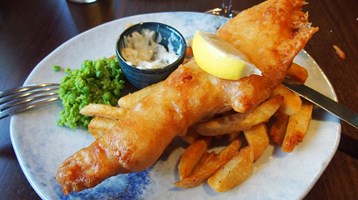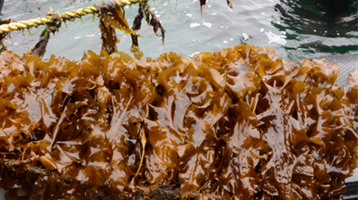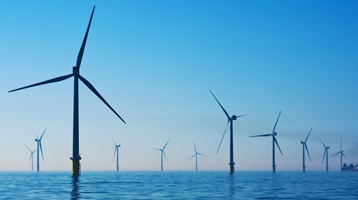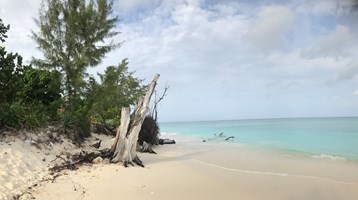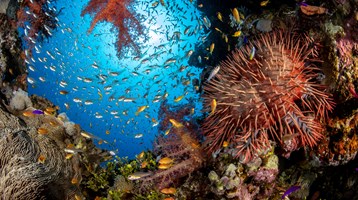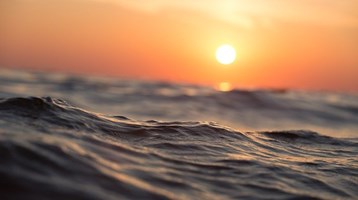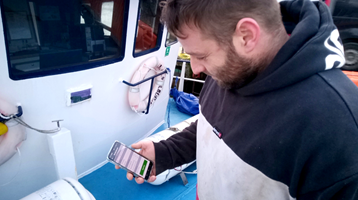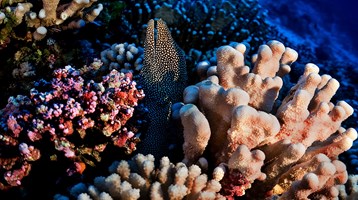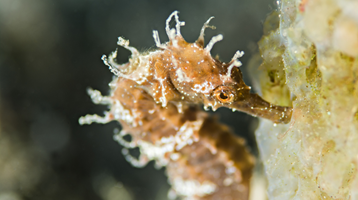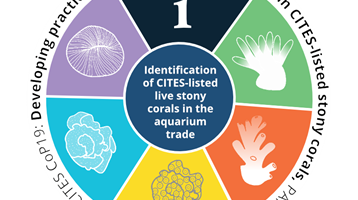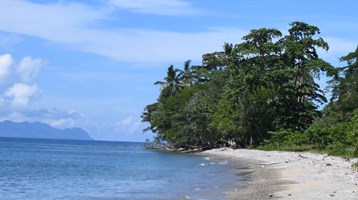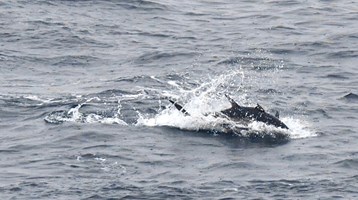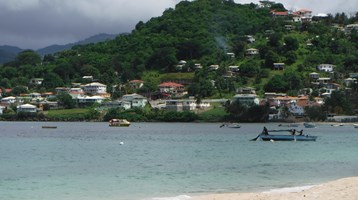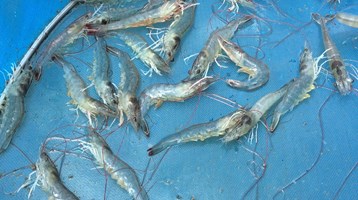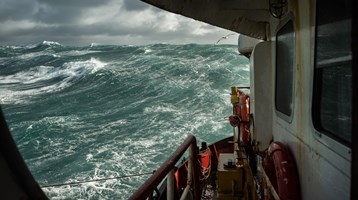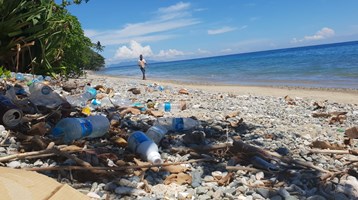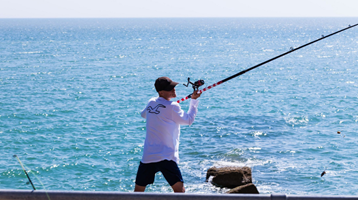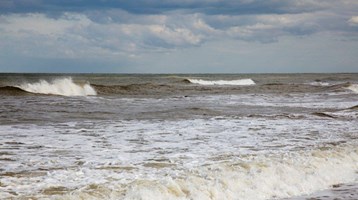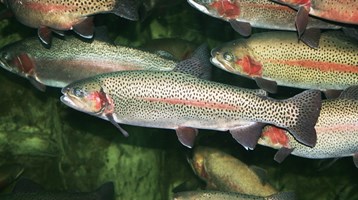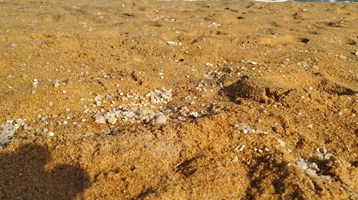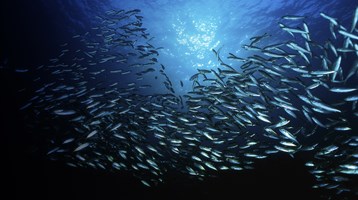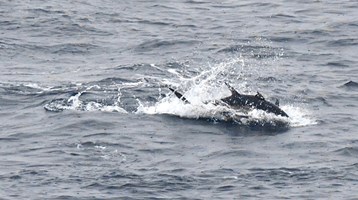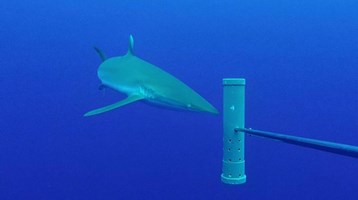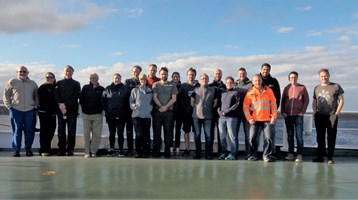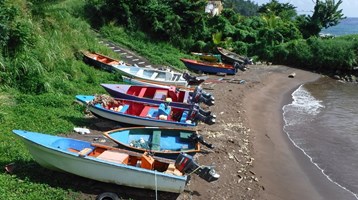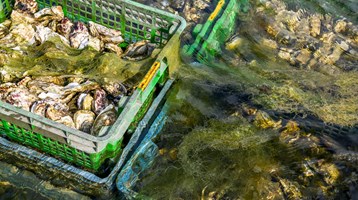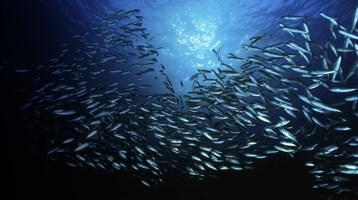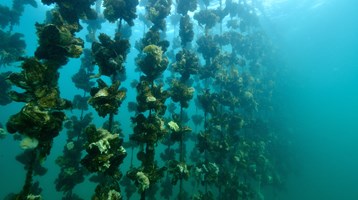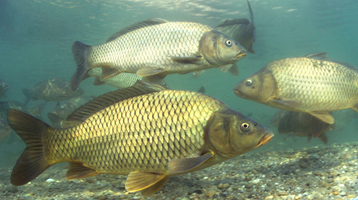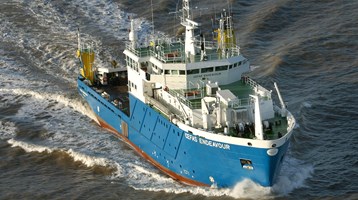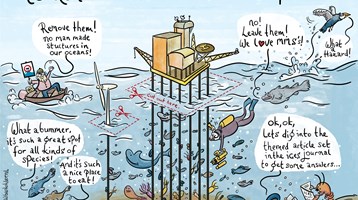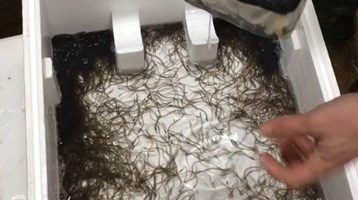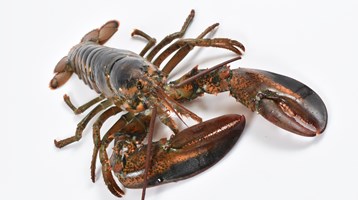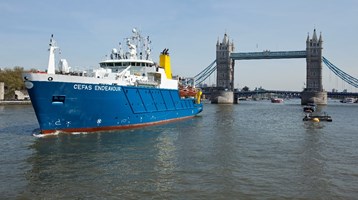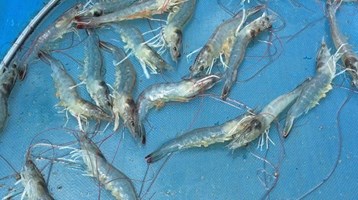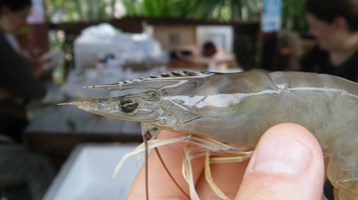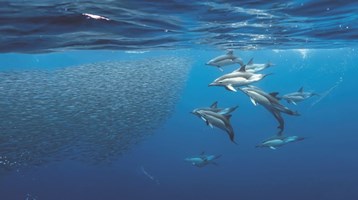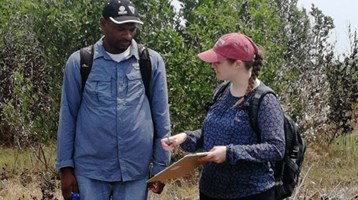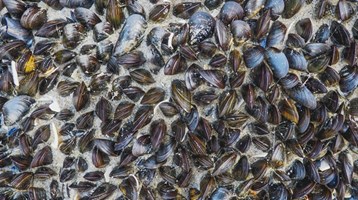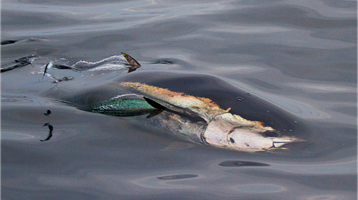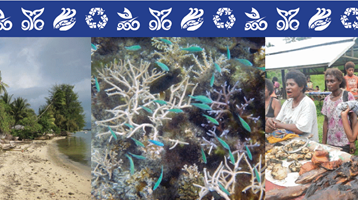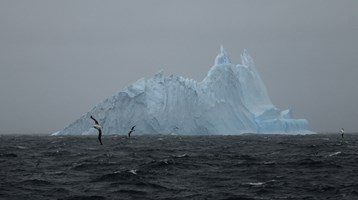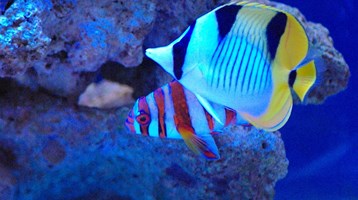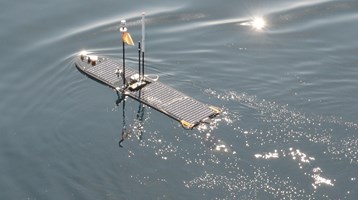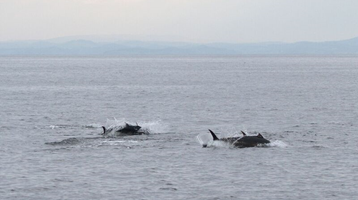New species of sea slug discovered in UK waters
1 March 2024
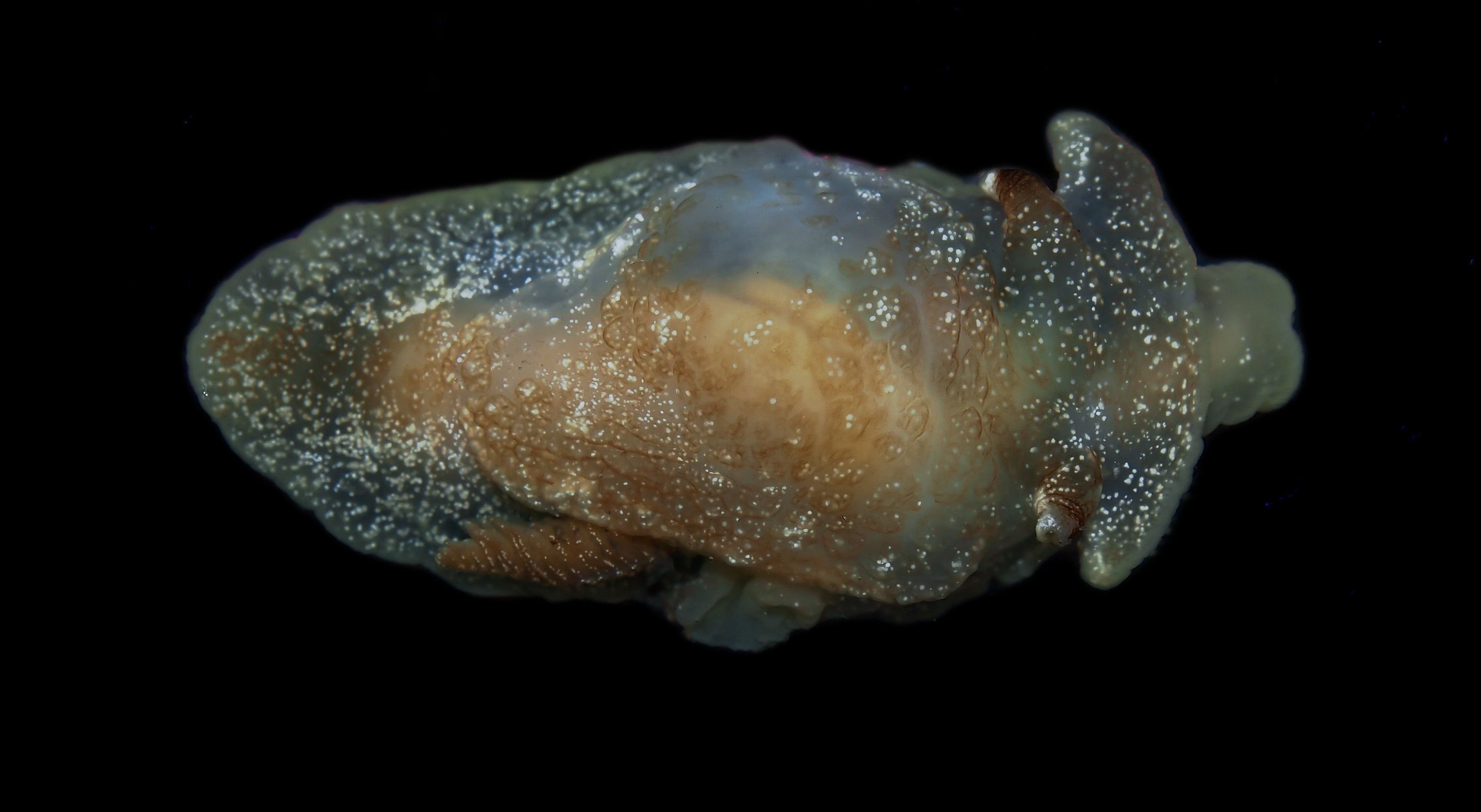
An exciting discovery has been made by researchers in the waters off the southwest coast of England. A new species of sea slug, named Pleurobranchaea britannica, has been identified by scientists from the Centre for Environment, Fisheries and Aquaculture Science (CEFAS) and the University of Cadiz, Spain.
Measuring between two and five centimetres long, Pleurobranchaea britannica is a type of side-gill sea slug. Specimens of this newly classified species were collected during routine fisheries surveys conducted by Cefas, and the Instituto Español de Oceanografía in 2018 and 2019 off southwest England and in the Gulf of Cadiz, southwest Spain.
Initially, given the presence of the distinctive side-gill on the right side of the body Cefas scientists tentatively identified the specimens as Pleurobranchaea meckeli, a well-known species of the Pleurobranchaea genus typically found in waters around northern Spain to Senegal and across the Mediterranean Sea. However, no previous records of the species in UK waters existed, raising questions around its identity.
After a long search to find experts specialising in this type of sea slug, the specimens were sent to a team of scientists in Spain for further investigation.
Analysis conducted by the University of Cádiz revealed that the specimens indeed represented a new species. An examination of the DNA, as well as the identification of physical differences in the appearance and reproductive systems when compared to known species, supported the classification of Pleurobranchaea britannica as a standalone species.
The discovery marks the first recorded instance of a sea slug from the Pleurobranchaea genus in UK waters. Scientists believe that this new species could potentially be found from as far south as Spain and Portugal, around the French coast and up to the southwest of the English Channel.
A type of shell-less marine mollusc, sea slugs are an extraordinarily diverse group of animals. Being at the top of the food chain and functioning as both predators and prey, they are essential to marine ecosystems. To protect themselves from predators, several species specialise in recycling parts of the animals they prey on. For instance, absorbing toxins from certain prey and secreting the poison into their own skin. Their sensitivity to environmental changes makes them valuable indicators of ecosystem health, helping scientists understand the impacts of climate change and human activities on marine habitats.
The study, published in the Scientific journal of Zoosystematics and Evolution highlights the importance of understanding the way species shift and move through the ocean in response to changes to their environment. Scientific surveys, such as those conducted by Cefas’ research vessel, the RV Cefas Endeavour, can play an important role in collecting the data and evidence needed to understand these changes, helping to inform conservation and management efforts to protect marine biodiversity and ecosystems.
Ross Bullimore, Marine Ecologist at Cefas who collected the specimens onboard the RV Cefas Endeavour, said:
"It is exciting to see that routine fisheries surveys can still lead to such discoveries. It only took a brief inspection of two specimens to be confident that we had stumbled upon a species of Pleurobranchaea. This was thrilling because no other species from this genus had been documented in UK waters, or even this far north. After close collaboration with the University of Cadiz, who carried out a more thorough assessment, we were blown away to discover that we had identified a third, new species. There is often an assumption that we know everything there is to know about species found in UK waters, but this just goes to show that there is still so much to learn in our own backyard”.
Hayden Close, Seabed Analyst and Modeller at Cefas said:
"As a marine benthos expert, who is often involved in Cefas fisheries surveys that cover a wide geographical area, I have found it exhilarating and that we can continue to uncover new species and the new sightings of existing species. It just goes to highlight the value of these surveys and serves as a reminder of the ocean’s boundless unexplored secrets, even in areas we consider well-charted and studied".
Peter Barry, Marine Biologist at Cefas said:
“As scientists, we have learnt a lot from this new discovery. We are talking about differences between species that are almost impossible to see with the naked eye. It shows how easy it is to overlook and miss changes in the distribution and range of species we are familiar with seeing, or in this case, the presence of a whole new species where it isn’t expected. It shows the importance of continuing to question what we see if we are to advance our understanding of how our marine environment is changing.”
Dr. Juan Lucas Cervera Currado, Full Professor of the Department of Biology at the University of Cadiz, Spain, said:
“When CEFAS scientists contacted me and told that they had collected individuals belonging to the sea slug genus Pleurobranchaea, but whose specific identity was not clear, I was really surprised. Firstly, because species from this genus have never been found in the British Isles, and secondly, because the possibility of having found a new species of this genus in European waters was really exciting.
"This discovery has really helped to advance our knowledge of British and Spanish marine fauna, with the next steps being a more detailed review, including the use of molecular biology techniques, to understand more about P. meckeli and P. britannica. We suspect that the new species could be distributed throughout the French Atlantic coasts, northern Iberian Peninsula, mainland Portugal, eastern Andalusia and northern Morocco. We look forward to continuing our new partnership with Cefas as we monitor this new species."
Notes to Editors:
- In the north-eastern Atlantic and Mediterranean Sea, the pleurobranchid genus Pleurobranchaea Leue, 1813 is represented by two species, Pleurobranchaea meckeli and Pleurobranchaea morosa. The former is a well-known species distributed from northern Spain to Senegal and the Mediterranean Sea, while the second is a poorly-described species. This paper identifies a third, new species, Pleurobranchaea britannica. The British specimens constitute the first occurrence of the genus Pleurobranchaea in UK waters.
- The genus Pleurobranchea are commonly known as side-gilled sea slugs. This common name refers to presence of the gills, respiratory organs, of the animal being externally located on the right side of the animal's body. These gills allow the sea slug to extract oxygen from the water.
- As no other groups of sea slugs from UK waters feature this side-gilled anatomy, it was the presence this feature along with characteristic aspects of the ‘head’ that led scientists to initially recognise that they had found something different to those species commonly recorded in UK waters.
- Pleurobranchaea britannica is cream and clay coloured with white specks. Individuals found were between 2 and 5 cm in overall length.
- The side-gill can be seen in the photo (circled in blue) and is leaf-like, or like a traditional canoe paddle structure. Characteristic aspects of the ‘head’ (circled in red) are the widely-spaced rhinophores, sensory structures found in many marine snail and slug species. These hold specialised cells which sense chemicals in the water and allow the sea slug to detect and locate food, find mates, avoid predators and generally aid navigation through its environment.
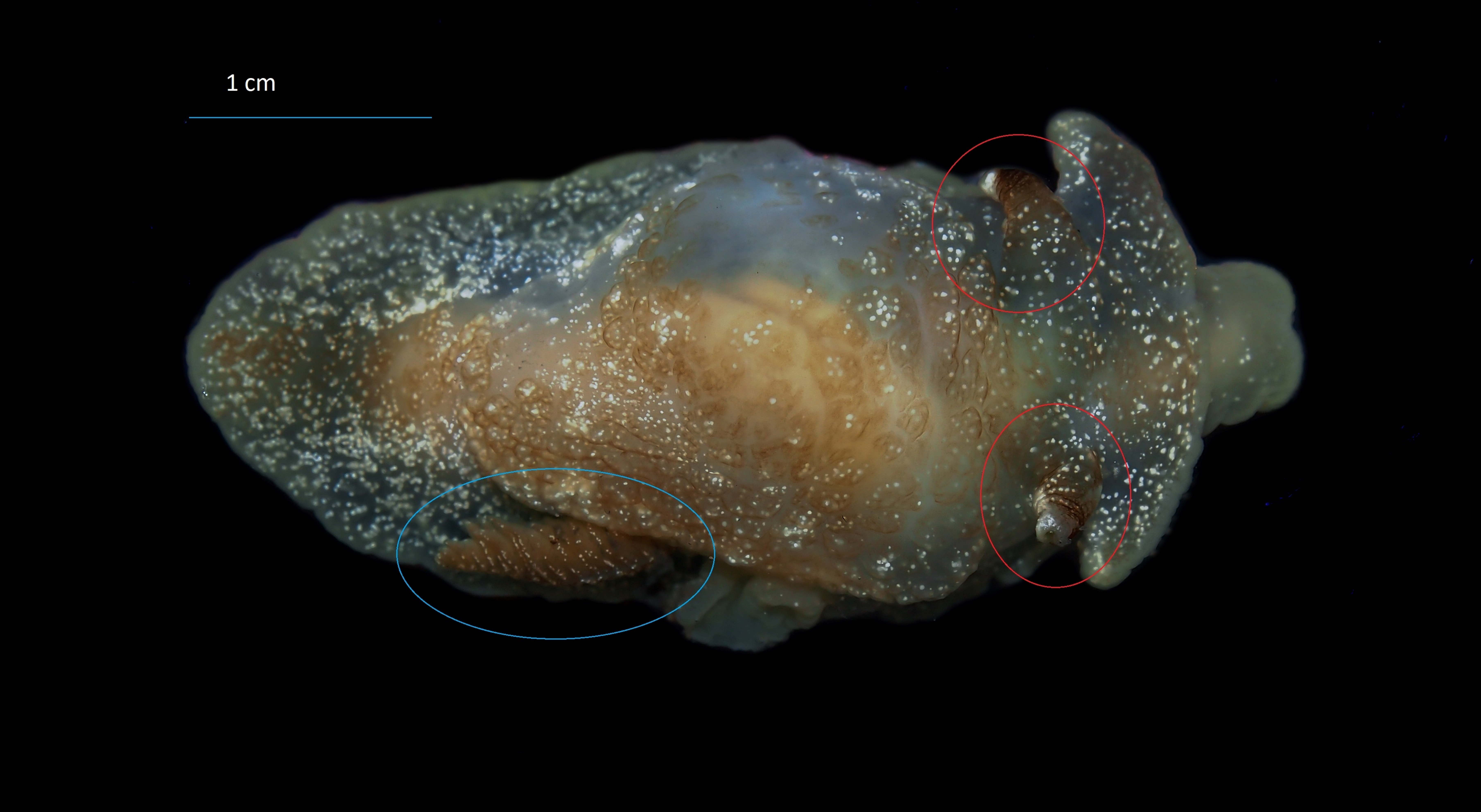
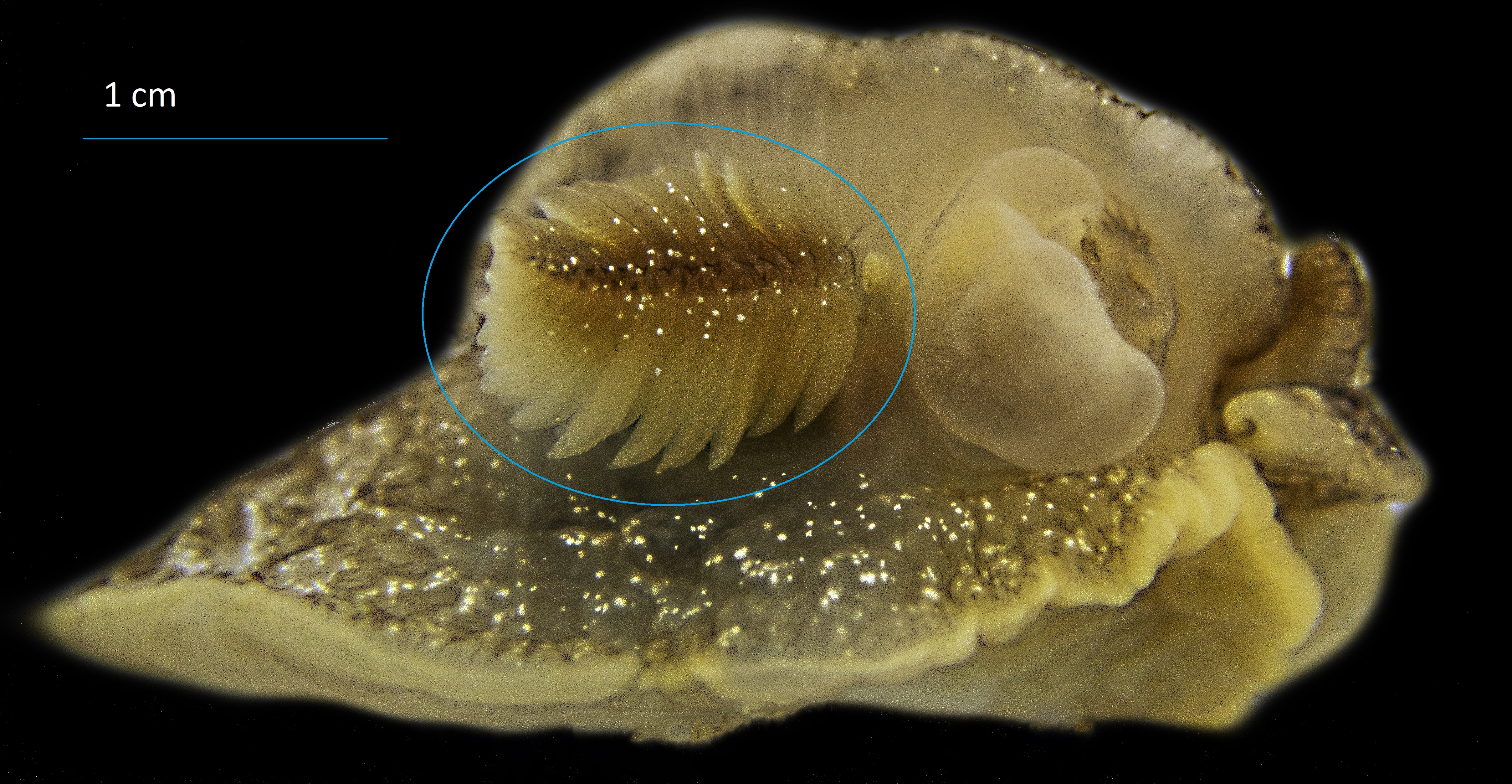
Map - location of species of Pleurobranchaea britannica collected
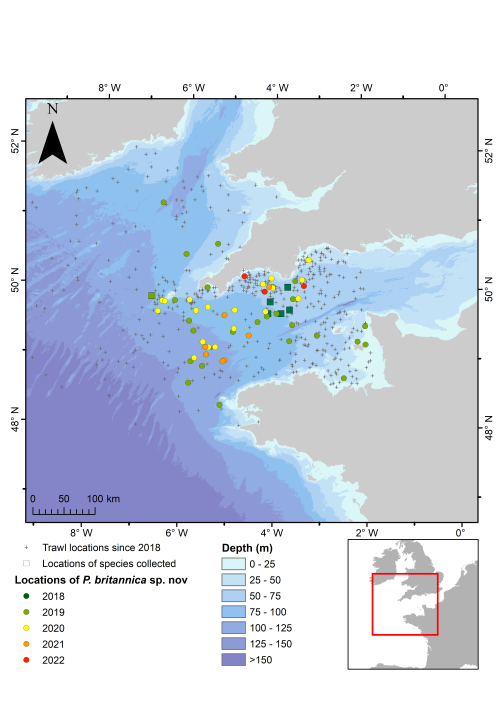
Related to this article
Topic
Case studies
People
News
Further Reading


Working for a sustainable blue future
Our Science

